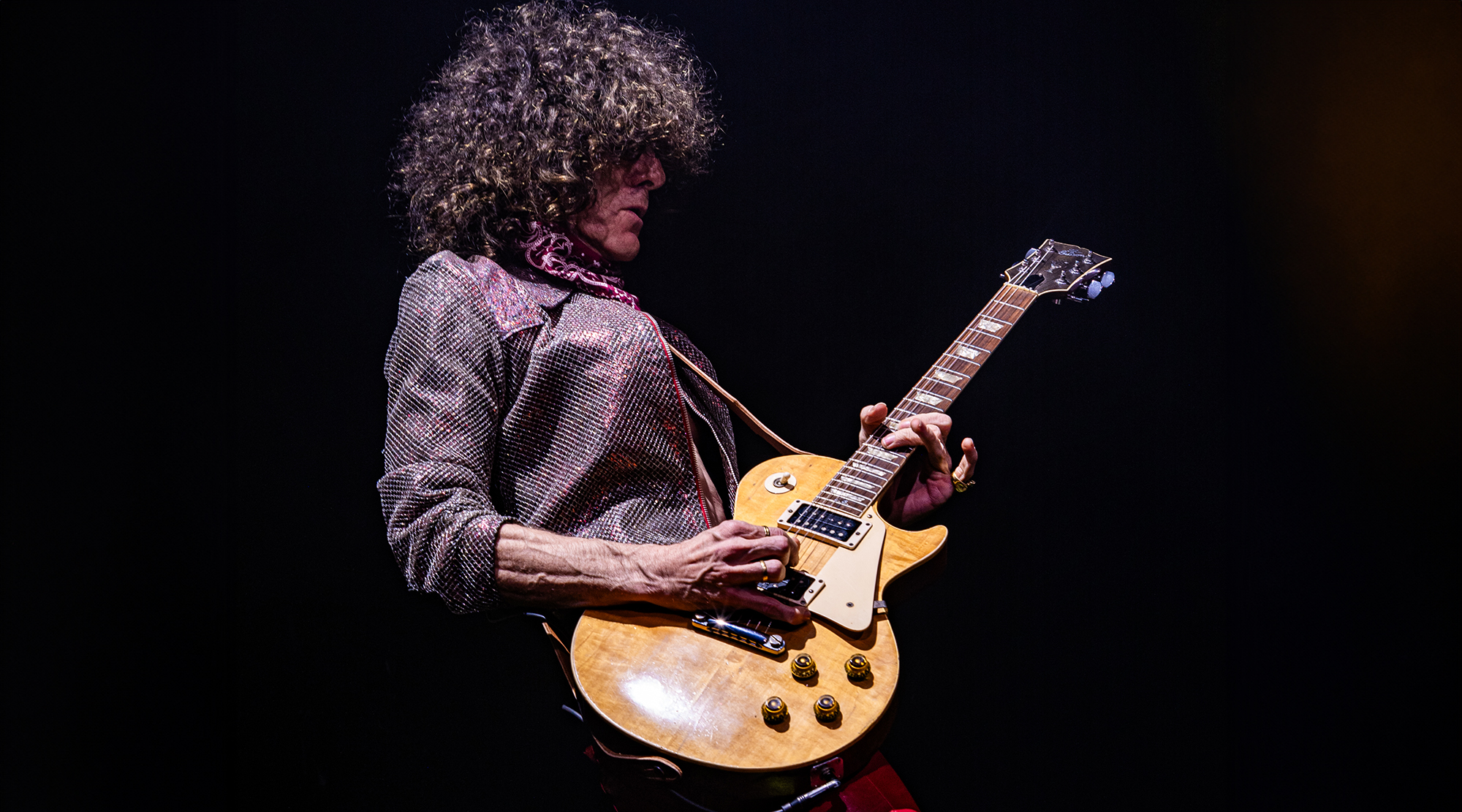Watch Jimmy Page’s “Kashmir” Acoustic Demonstration
Get inspired by this hypnotic riff and explore the alternative realm of DADGAD tuning.

On this day, in 1975, Led Zeppelin released their monumental double album Physical Graffiti.
Produced by guitarist Jimmy Page, the Multi-Platinum, US Billboard 200 chart-topping long-player featured the exotic DADGAD-flavored song, “Kashmir.”
Following an idea originating from Page and developed with drummer John Bonham, "Kashmir" was recorded in early 1974 at Headley Grange in England.
Soon after Physical Graffiti was released, “Kashmir” became a firm favorite among fans and a staple of Led Zeppelin’s setlist until their disbandment in 1980 following the tragic passing of Bonham.
When Page and singer Robert Plant reformed as Page and Plant in 1994 along with drummer Michael Lee and bassist Charlie Jones (no relation to Zep bassist John Paul Jones), “Kashmir” remained a highlight.
Greatly enhanced by an ensemble of Egyptian and Moroccan musicians, the standout song also featured as the closer on 1994’s No Quarter: Jimmy Page and Robert Plant Unledded live album.

DADGAD – occasionally referred to as Celtic tuning – is a popular form of alternative guitar tuning. It can be easily achieved by tuning the first, second and sixth strings down a whole tone from E standard tuning.
This creates an open D suspended fourth chord which includes the fourth note of the D major scale (G) in place of the major third (F#) while the fifth (A) remains alongside the root (D).
This tuning was famously adopted by British folk guitarists Davey Graham and Bert Jansch – both of whom were of major importance to Page.
During a famous scene from the late '00s documentary film It Might Get Loud, U2 guitarist The Edge asks Page where the idea for “Kashmir” came from. To which he replies: “It originated from playing around on a tuning that I’d been using quite a bit. They call it DADGAD…
“You’ve got this riff which is circling round and then this cascade that goes over the top and it hits its atonal point, you know… That’s one of those real hypnotic riffs.”
One of the clearest demonstrations of Page playing this riff appeared in a 1989 BBC Arena documentary titled Heavy Metal. Here, you can get a close-up look at how he uses the open tuning to create mesmeric drone notes while sliding melodic chord shapes up and down the neck of his acoustic guitar.
Similarly, the chromatic "Kashmir" signature riff is rendered all the more effective by a low open D pedal note.
Browse the Led Zeppelin catalog here.
Get The Pick Newsletter
All the latest guitar news, interviews, lessons, reviews, deals and more, direct to your inbox!
Rod Brakes is a music journalist with an expertise in guitars. Having spent many years at the coalface as a guitar dealer and tech, Rod's more recent work as a writer covering artists, industry pros and gear includes contributions for leading publications and websites such as Guitarist, Total Guitar, Guitar World, Guitar Player and MusicRadar in addition to specialist music books, blogs and social media. He is also a lifelong musician.











